Visions from Afar: Island of the Dragon’s Blood
An ecological recap of a recent-ish trip to Socotra
Friends, fellows, and flora, welcome to this month’s Vision (from afar!). One of our favorite things to do while traveling to new places is to take many a gander at the botanical beauts that occupy foreign niches. In this issue, we look back at a trip made in January to the Island of the Dragon’s Blood:
SOCOTRA.
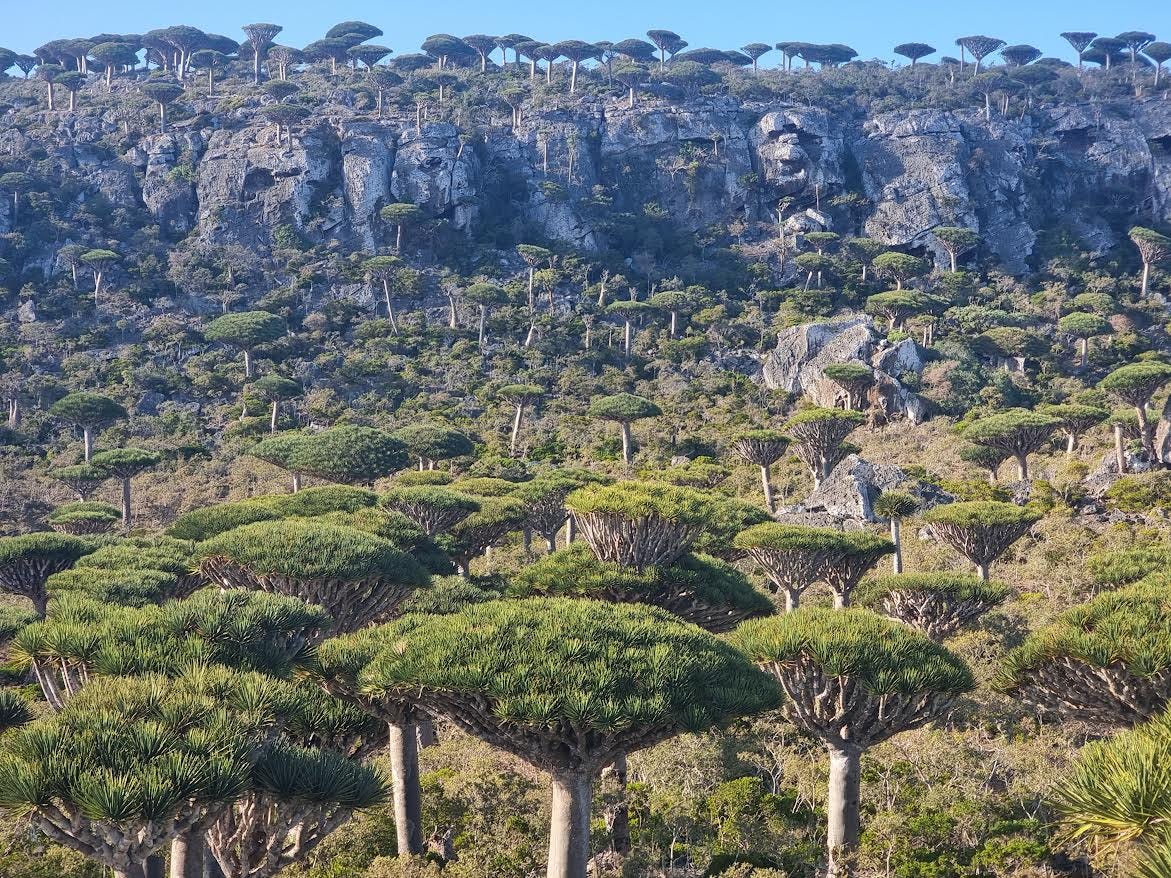
The Socotran archipelago and its many inhabitants are exceptionally unique, mostly as a function of its geologic history. It is one of the most isolated landforms on Earth of continental origin. This means unlike the islands dotting the Pacific which are volcanic in origin, Socotra was birthed from the supercontinent Gondwana, eventually breaking off between 15 - 35 million years ago. All that time and distance away from continental landmasses has led to a Darwinian boom in adaptation, resulting in high endemicity with over 700 species found nowhere else in the world.
Socotra, the largest and main island in the archipelago, is characterized by three distinct environments: coastal plains with massive sand dunes, limestone plateaus, and the imposing granite Hahjir Mountains.
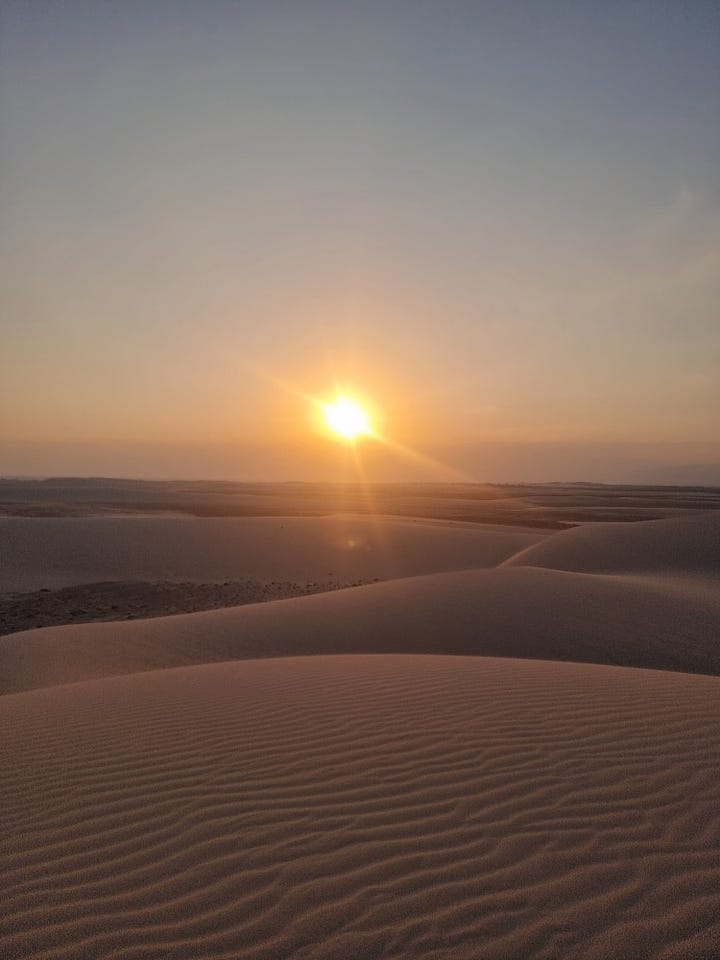
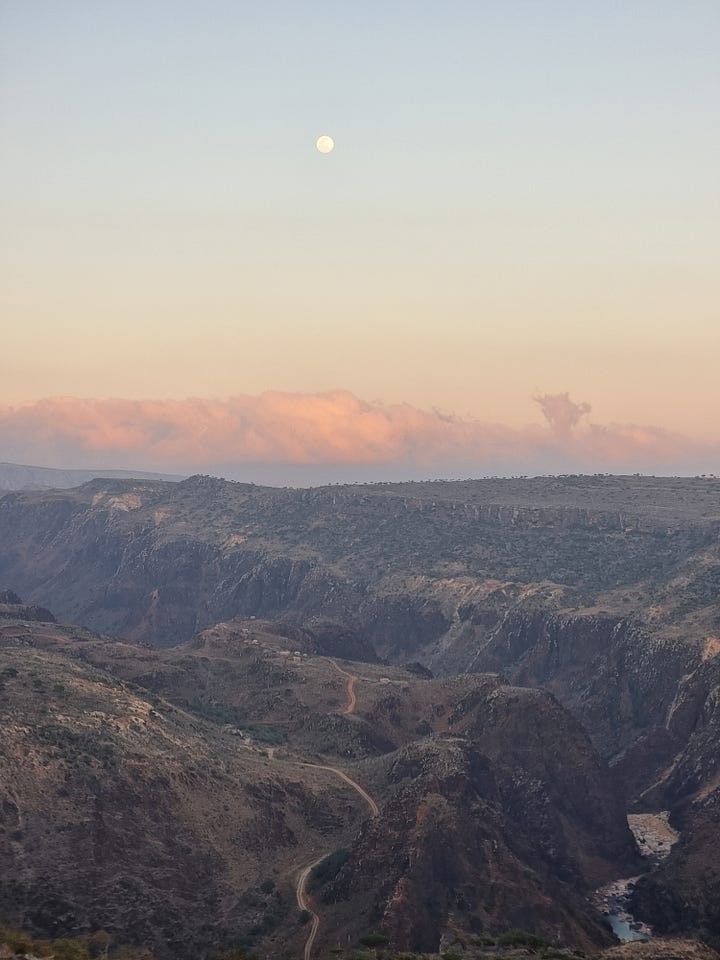
Upon landing in Socotra we were greeted with the Hahjir massif, its jagged, imposing profile stark against the low-lying structures of Hadiboh, the largest town on the island. The drive to our first campsite was breathtaking, the Arabian Sea a brilliant, lustrous blue to our left. In a moment that seemed almost too good to be true, we saw a pod of dolphins leap and play in the turquoise spray.
We continued our drive surrounded by karstic formations dotted with Socotra’s iconic succulent vegetation, all of which I’d never seen before: Boswellia trees famously used for frankincense, Dendrosicyos socotranus, the only member of the cucumber family (Cucurbitaceae) to grow in a tree form, all sorts of succulent plants lodged between rocks, and the rotund, drum-like Adenium socotranum that populated the steeper cliffs. Unfortunately, we were there a few months before the main flowering season, but still managed to catch some stunning desert roses in bloom.
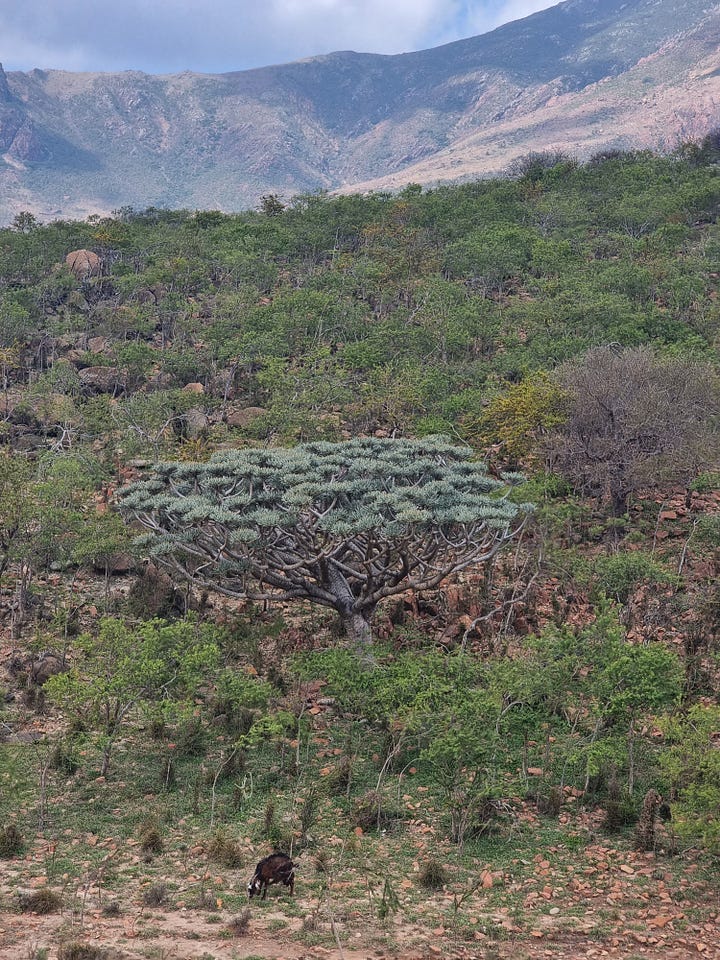
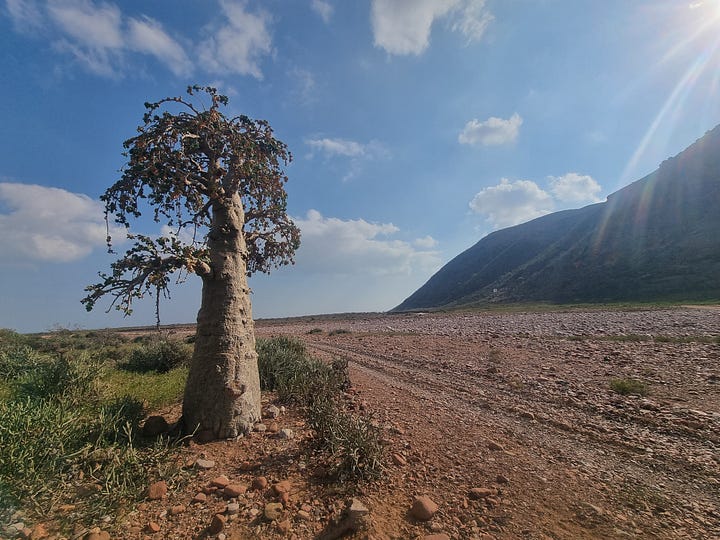
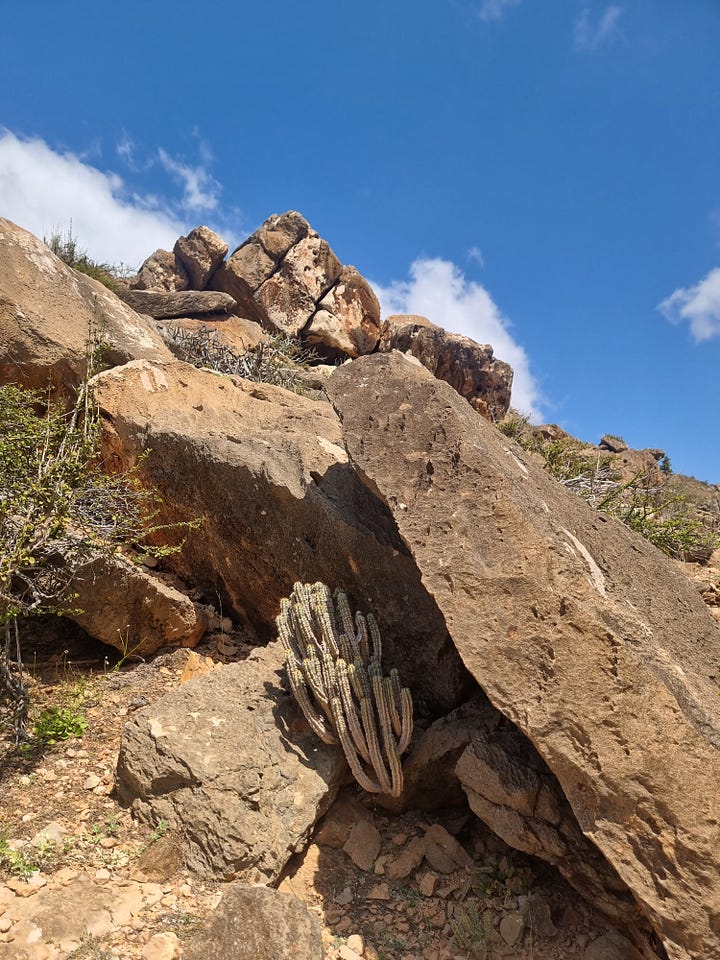
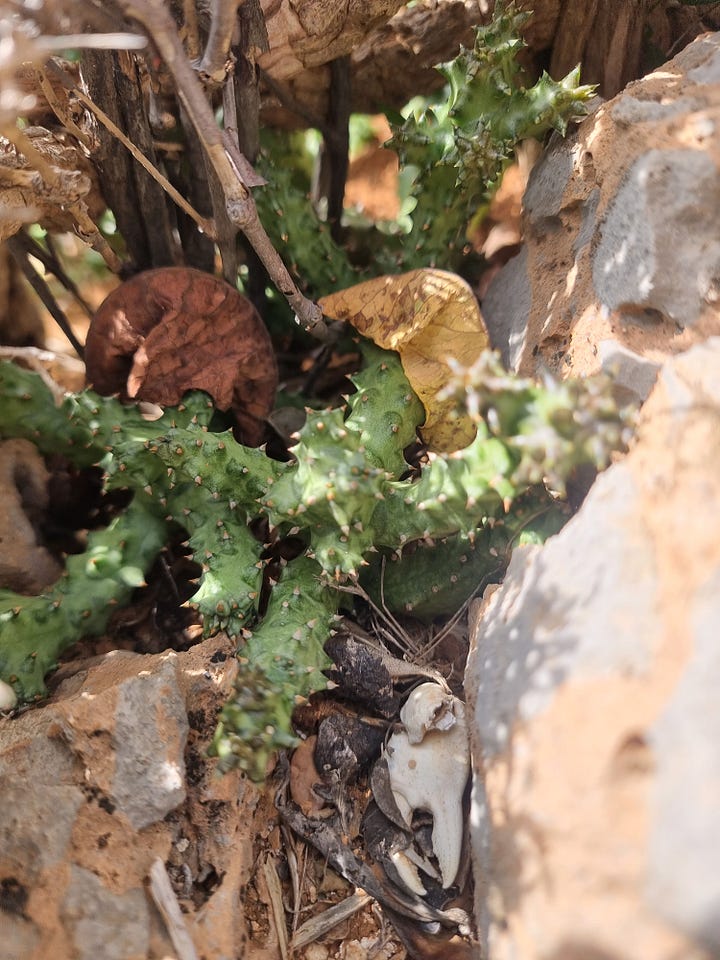
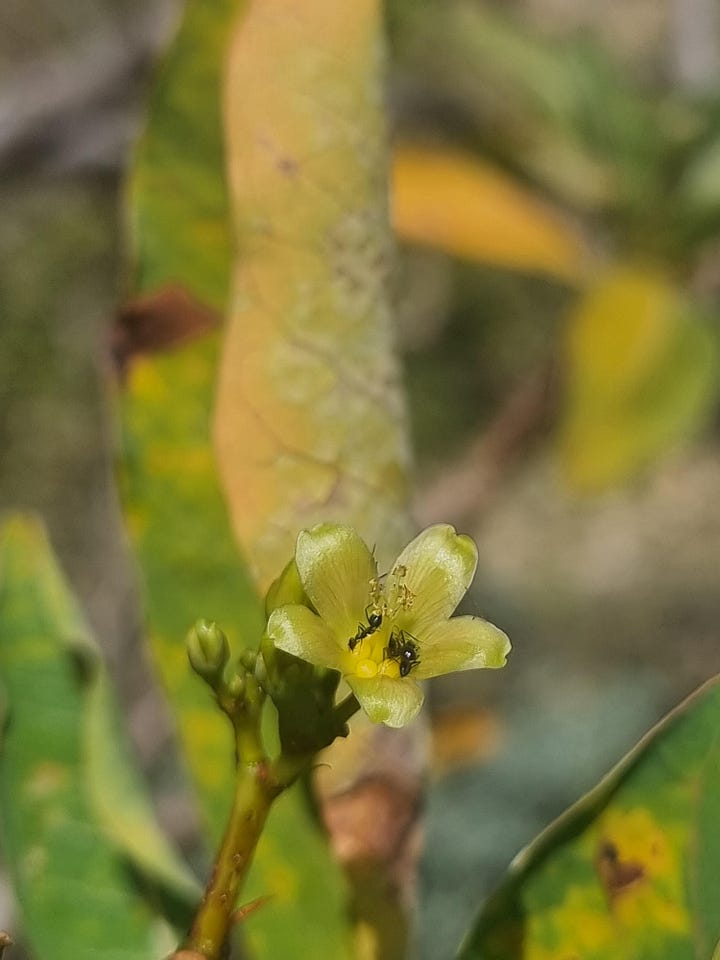
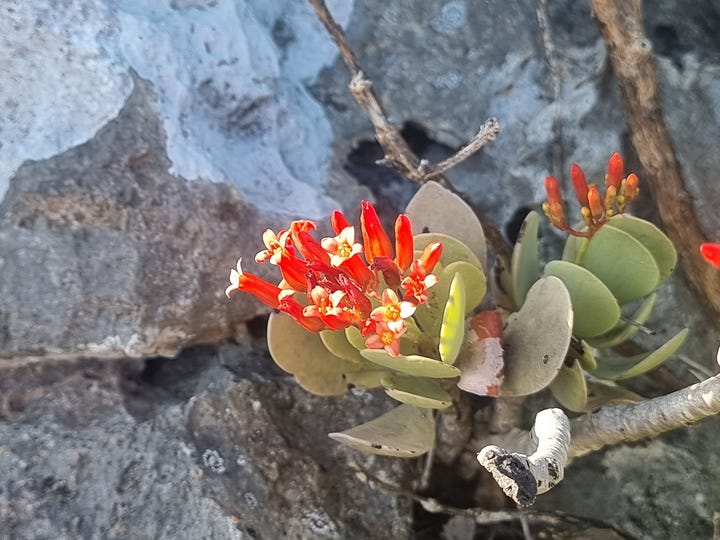
Our first full day in Socotra began early, at 04:30 AM. We drove a few minutes down to a massive sand dune, then painfully climbed our way to the top. Climbing dunes is difficult work; if you're not careful, you make no progress as you push down on the sand, sinking with each step in a Sisyphean attempt to summit. Once at the top, we sat and waited for the sun to rise. The dune begins to come to life as the light hits it, its soft peaks and folds turn dusty pink as they bask in the day’s first sunbeams. After sitting for some time, enjoying the spectacle of the day unfolding, we ran back down the dune, which was much more fun than climbing up, and ten times as fast. Once back at camp, we prepared for the main adventure of the day, a hike up the Homhil plateau.
The first hour of the hike was already stunning, but as we crested the ridge our surroundings turned into a dreamscape: a small canyon filled with wildflowers blooming everywhere, an enticingly blue pool fed by a bubbling stream, and our first sighting of Socotra’s most famous inhabitant, the Dracaena cinnabari. I must have continued exploring Homhil like a sleepwalker, spellbound and entranced underneath the umbrella canopies of the dragon trees.
A quick search led to a bonanza of succulence, including the two Dorstenia species present on the island, D. gigas and D. socotrana, alongside Euphorbias, Aloes, and other members of the Apocynaceae family.
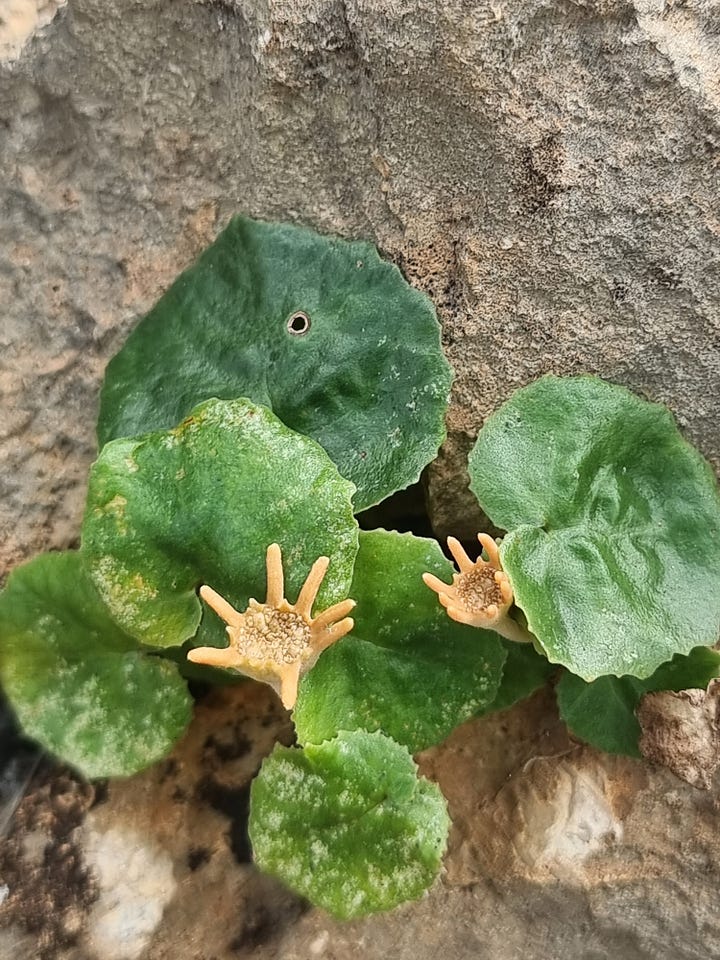
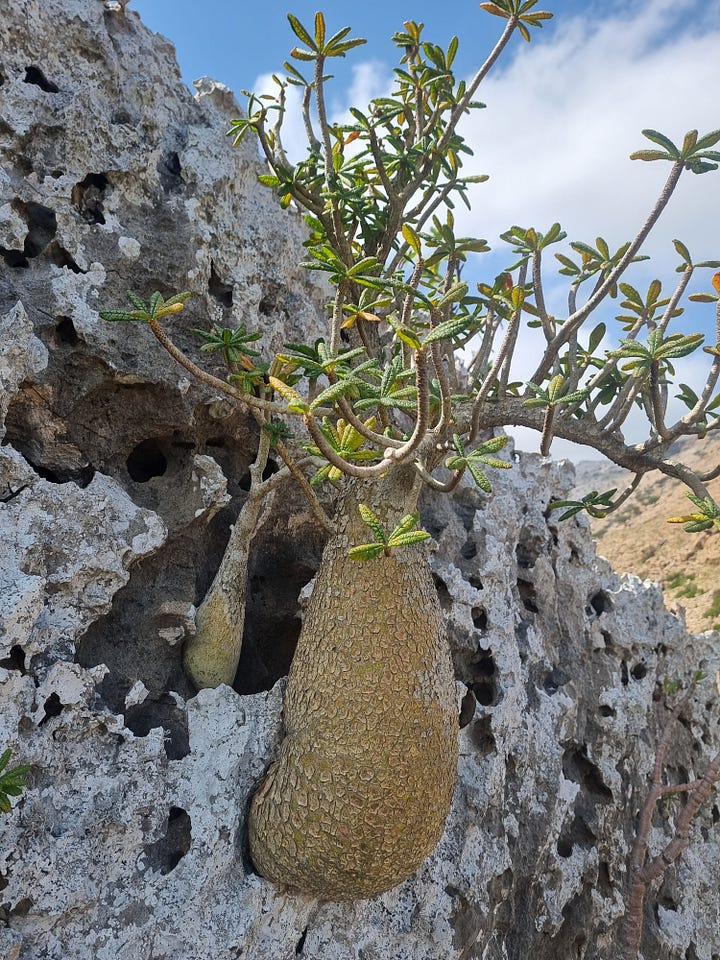
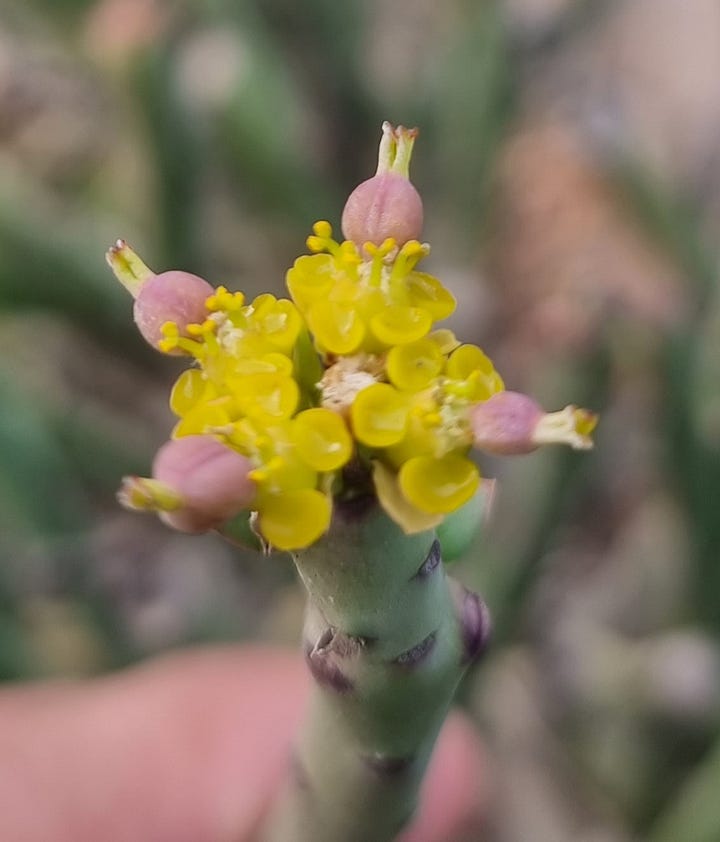
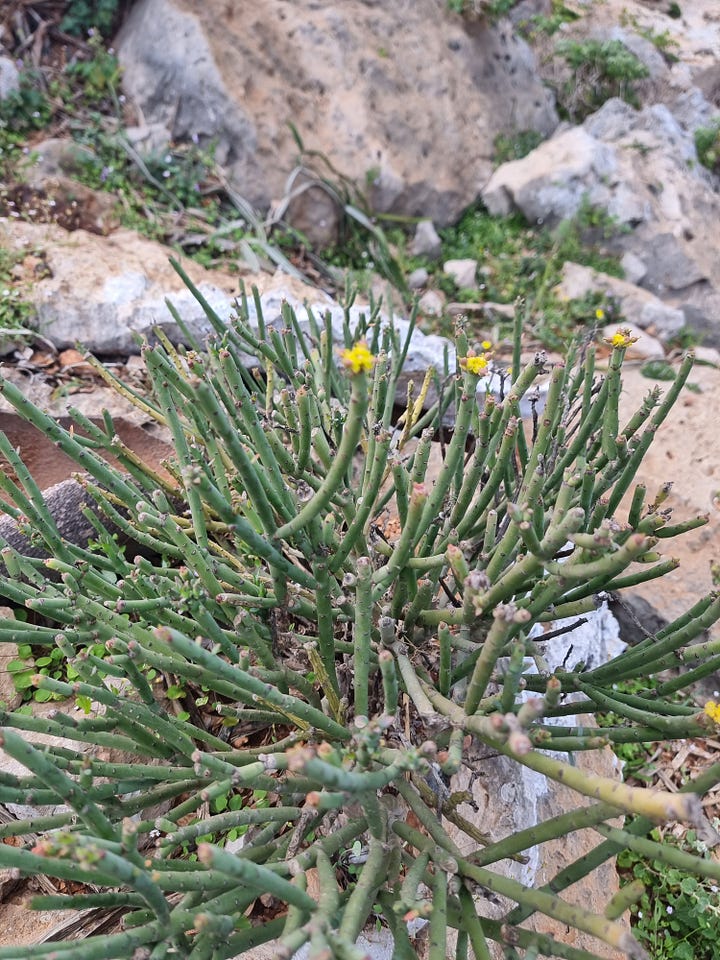
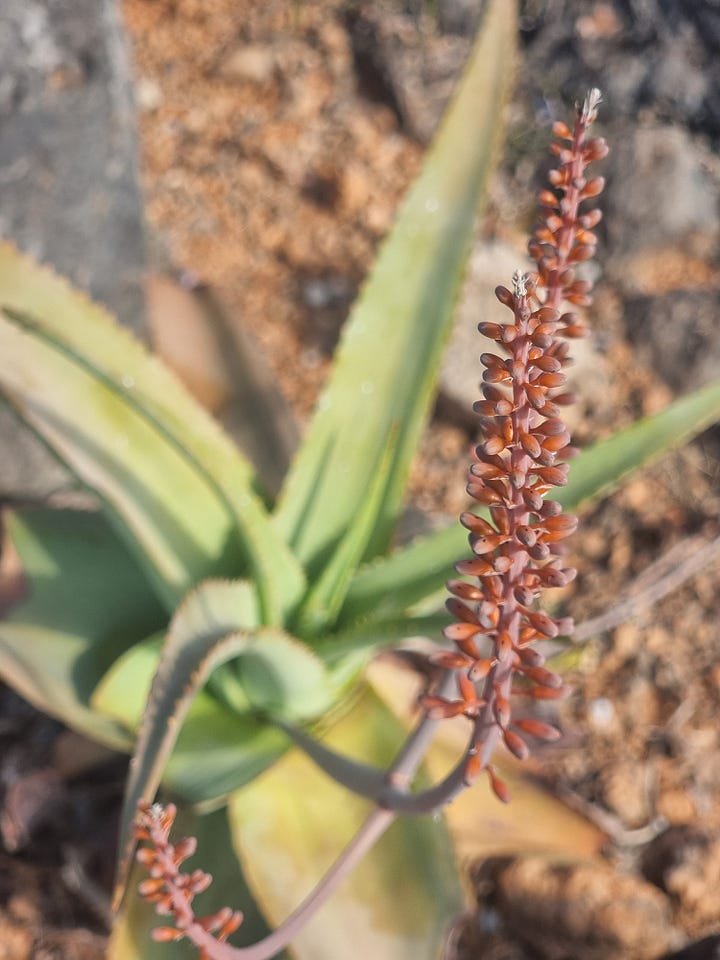
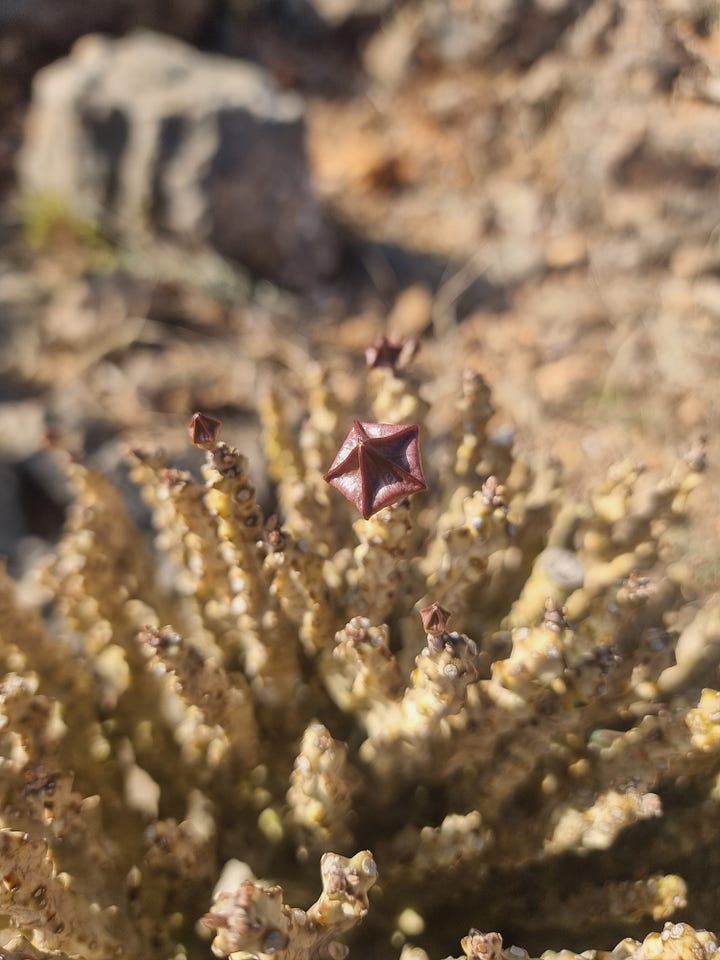
After our descent from Homhil, we drove to the easternmost point of Socotra, where the Indian Ocean mixes with the Arabian Sea. We hopped about an intertidal rock pool filled with gobies, crabs, and myriad mollusks, all contesting the liminal niche. Interestingly, the vegetation that occurred nearby looked almost algal, though it wasn’t.
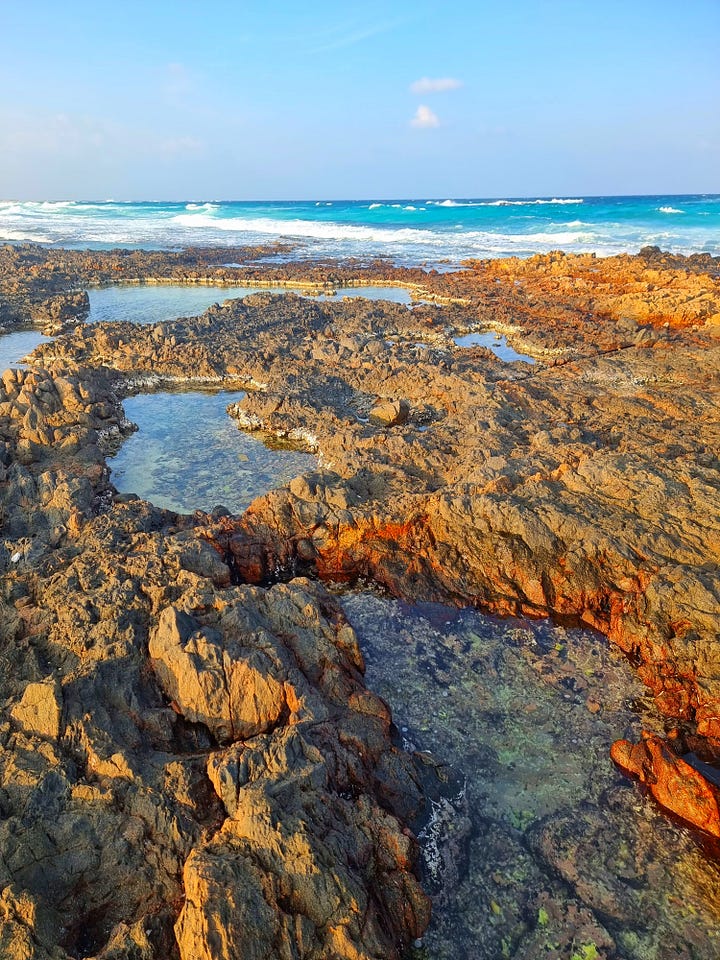
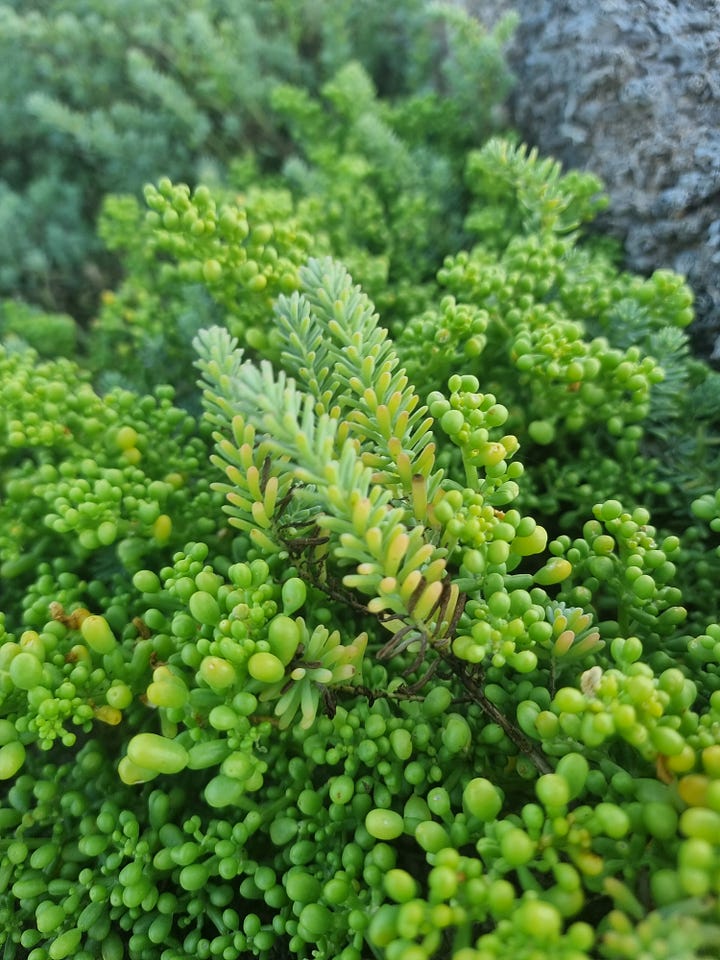
Our adventures in Socotra continued throughout the week, venturing deep into a cave to observe millennia-old ritual altars, dancing in the moonlight with a traveling band of musicians, and a near-death experience with a riptide. But let’s forego all that and move ahead to the iconic Fermihin, forest of dragon trees.
The dragon tree, Dracaena cinnabari, is named such due to the blood-red sap it produces, used as a dye locally. As you may have noticed, it belongs to the genus Dracaena, the same as the cultivated species that populates homes (and is experimented on) globally. Unlike its more diminutive cousins, D. cinnabari is arborescent and grows to be quite large. Like all monocots, they grow from the tip of the stem until they mature, at which point they begin to branch dichotomously, each branch splitting into two again and again to create that unique, surreal structure, before terminating in a rosette of leaves. Dragon trees grow incredibly slowly and are long-lived beings, the massive individuals of Fermihin are estimated to be over 500 years old.
Thankfully, poaching of dragon trees is fairly uncommon, despite their incredible aesthetic value. This makes sense, considering reaching that signature look takes a few centuries! We ran into a few “younger” individuals in a nearby nursery that had been planted there three decades earlier, barely reaching my waist. While there are no poachers, the ruminant, horned omnipresence of goats poses a serious threat to most plant-beings in Socotra. Constant grazing has led to a distinct lack of young individuals of D. cinnabari- only those in the high-walled nursery are present.
Thankfully even the goats could not mar the trip. Socotra was beyond expectation, it does not ask anything of you, but allows you to sit and marvel at your leisure, or to explore until you’ve had your fill- an impossible task. The abundance of massive dunes with their shifting sands, imposing cliffs, jagged boulders dotting the landscape, the red ground arid and dry; all so drastically different from the tropical lands I’ve come to know, and yet just as vibrant and full of life. To be both guest and witness to this interplay of non-human beings, the ecological machinations of which have resulted in unimaginable landscapes was a blessing beyond blessings. As we drove to the airport to bid the island farewell, the local children waved and blew kisses as we went past, which catalyzed a sudden melting of my heart. I imagine traces must lay scattered over Socotra, slowly calcifying into the substrate.
This issue of Plant Visions was written by John Altomonte. Before you go, maybe share this newsletter with a friend, and then check us out on Instagram. We love you.
References:
Bauerova, L., Madera, P., Senfeldr, M., Habrova, H. Age Estimation of Dracaena cinnabari Balf. f. on Socotra Island: A Direct Method to Determine Its Lifespan, 2023


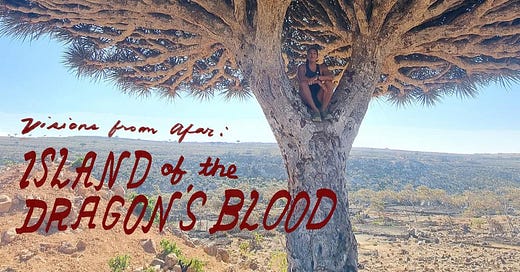


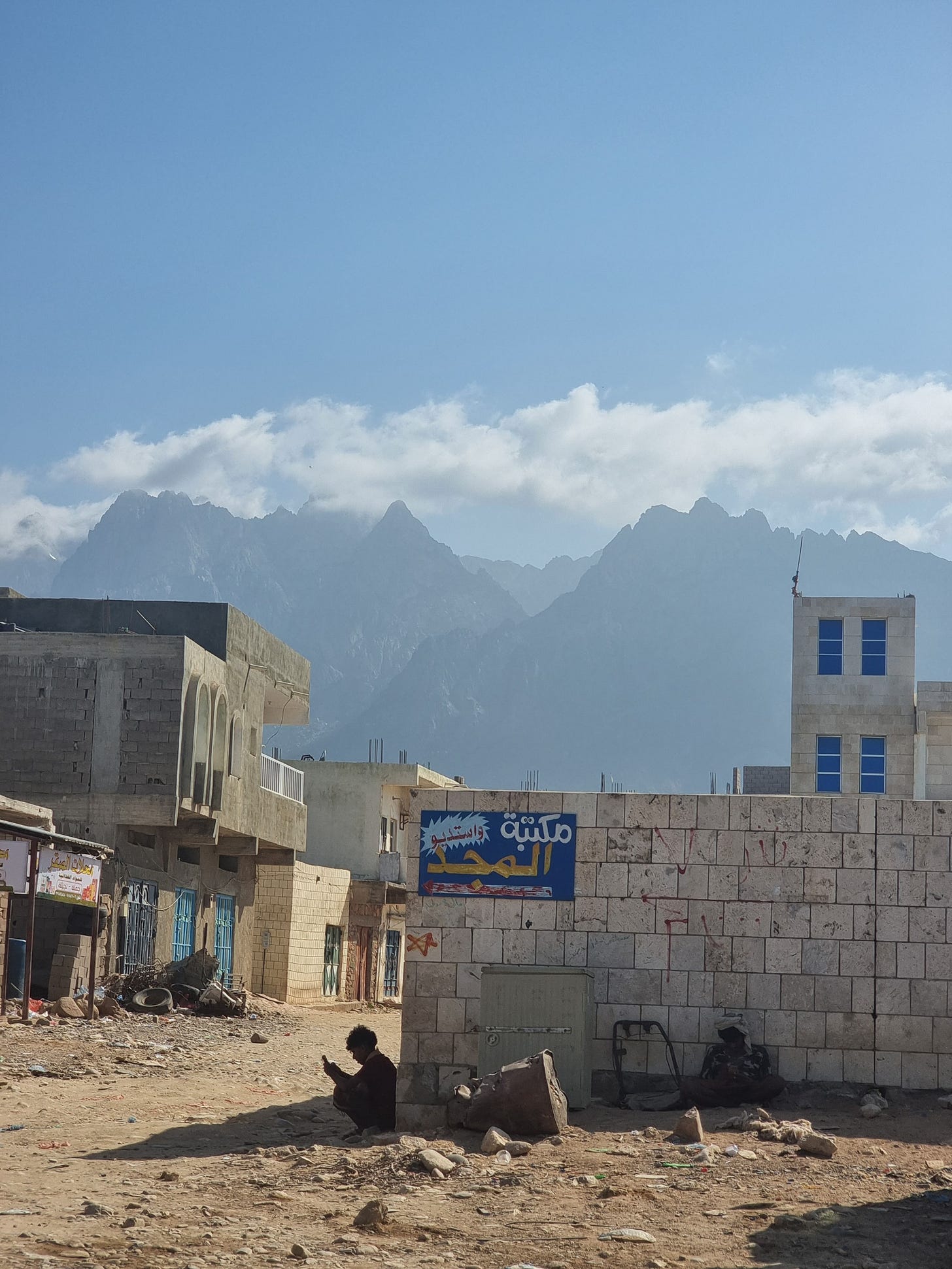
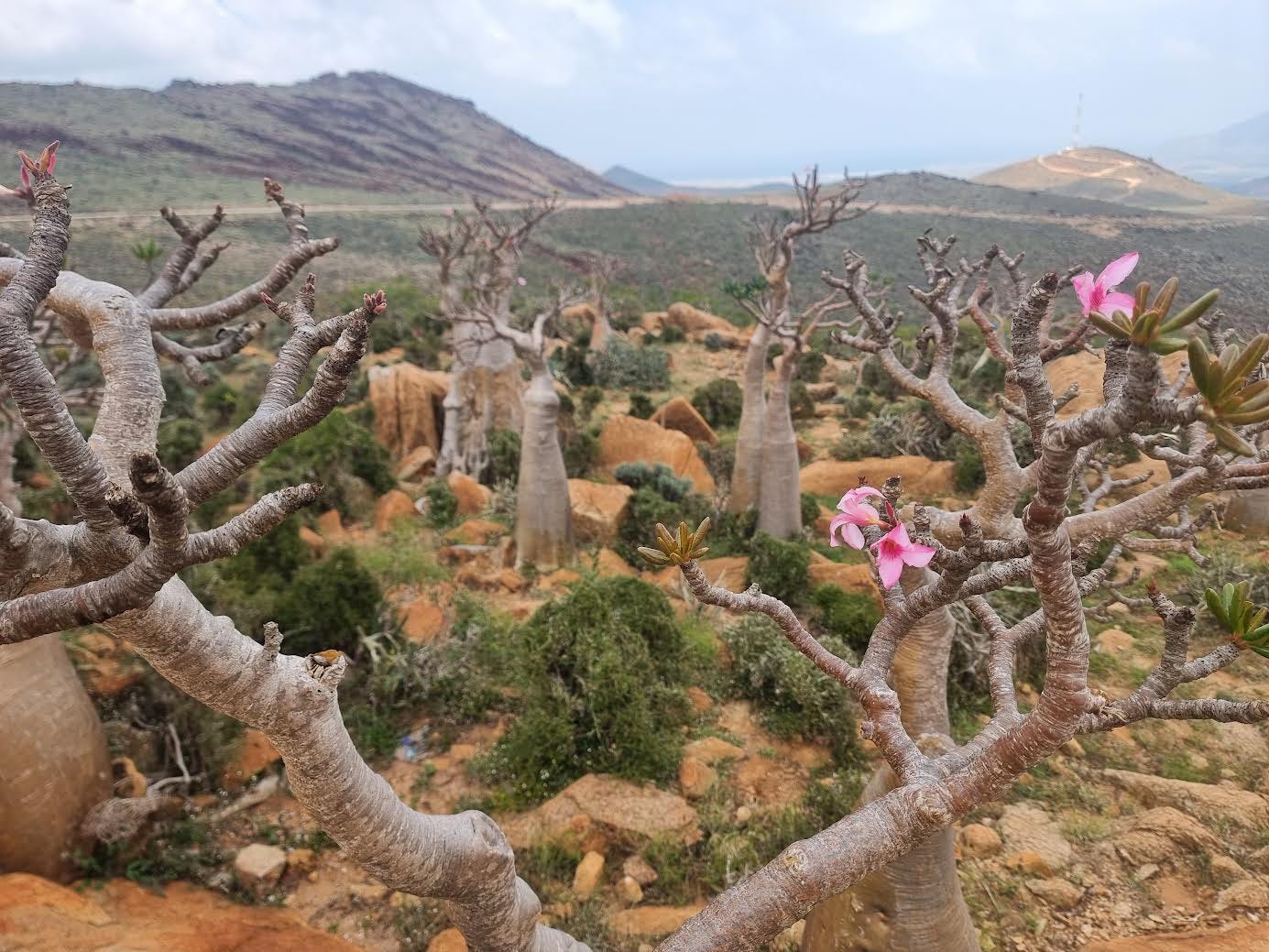
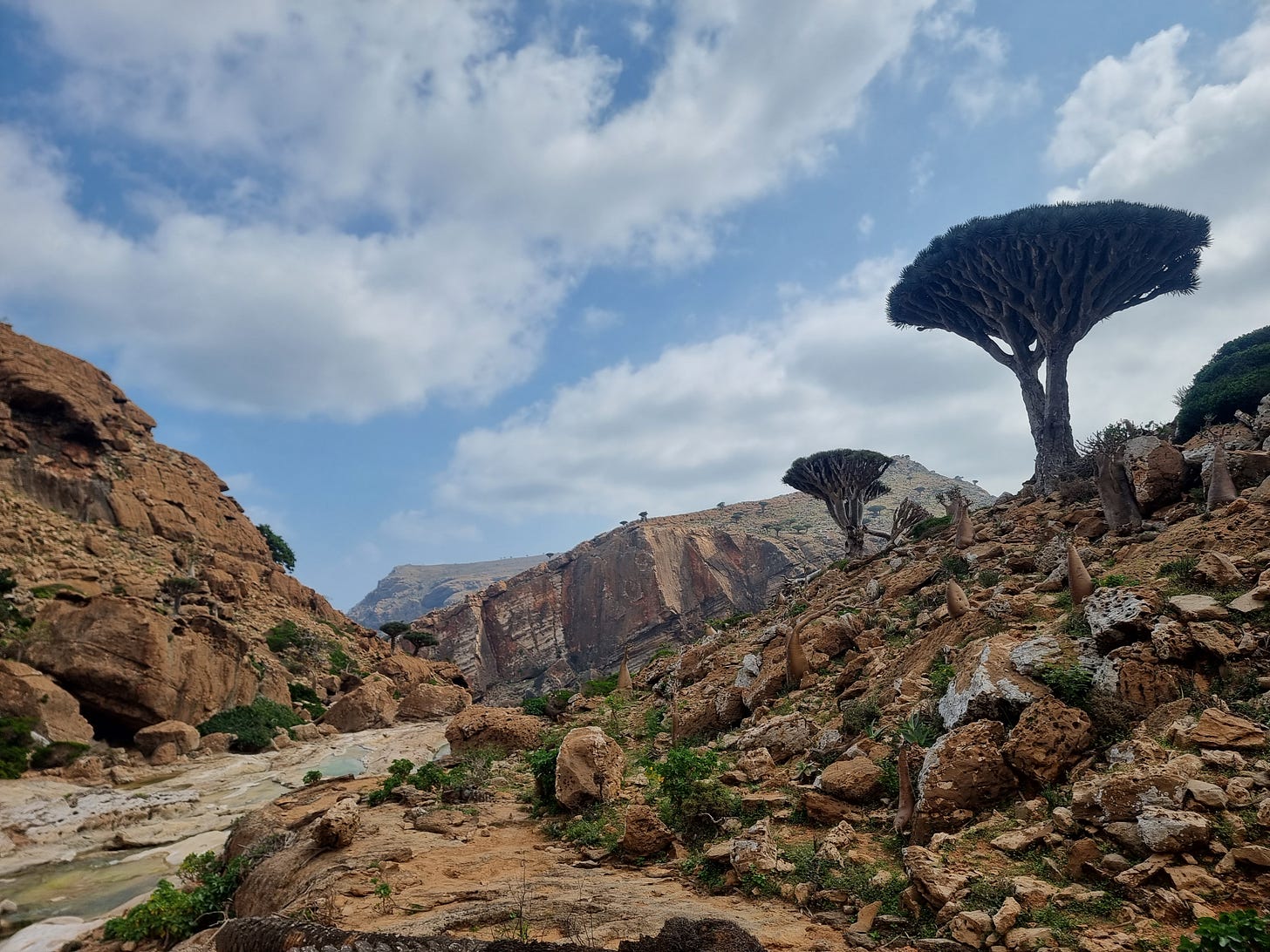
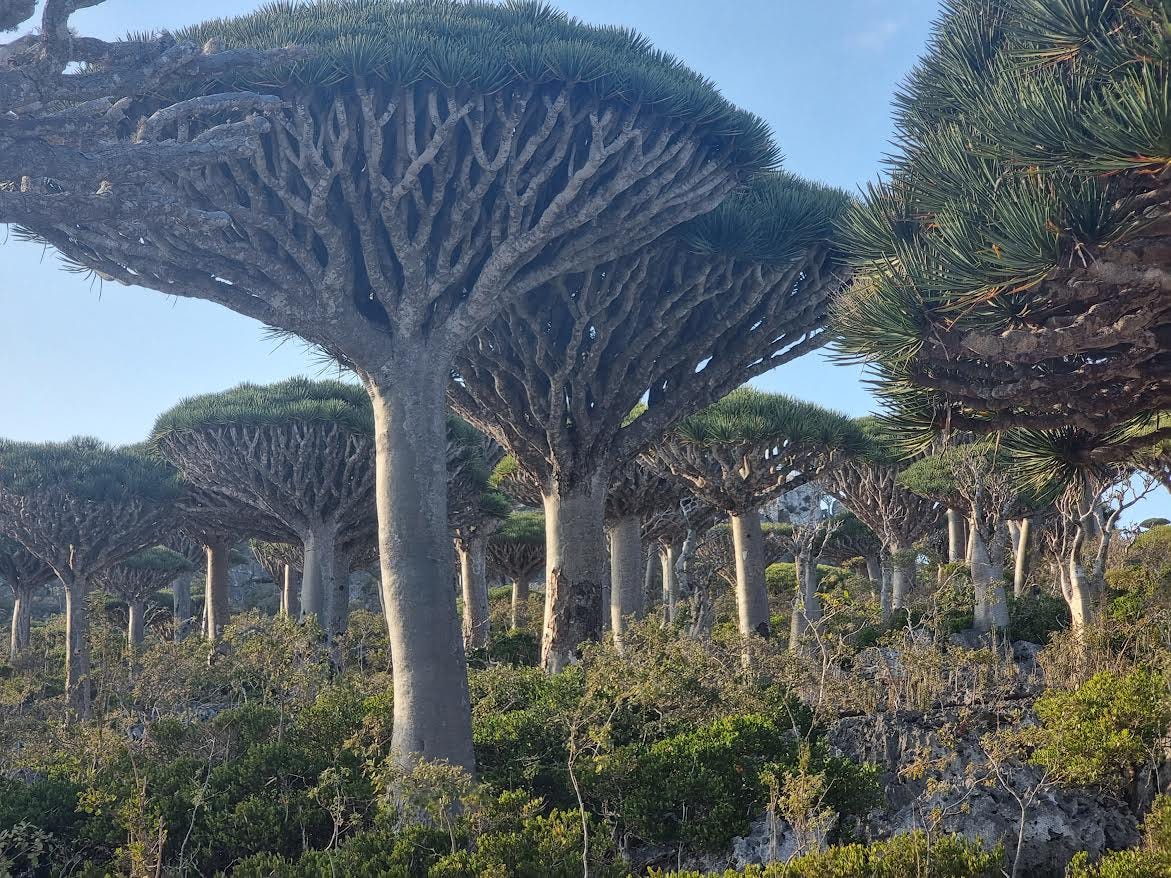
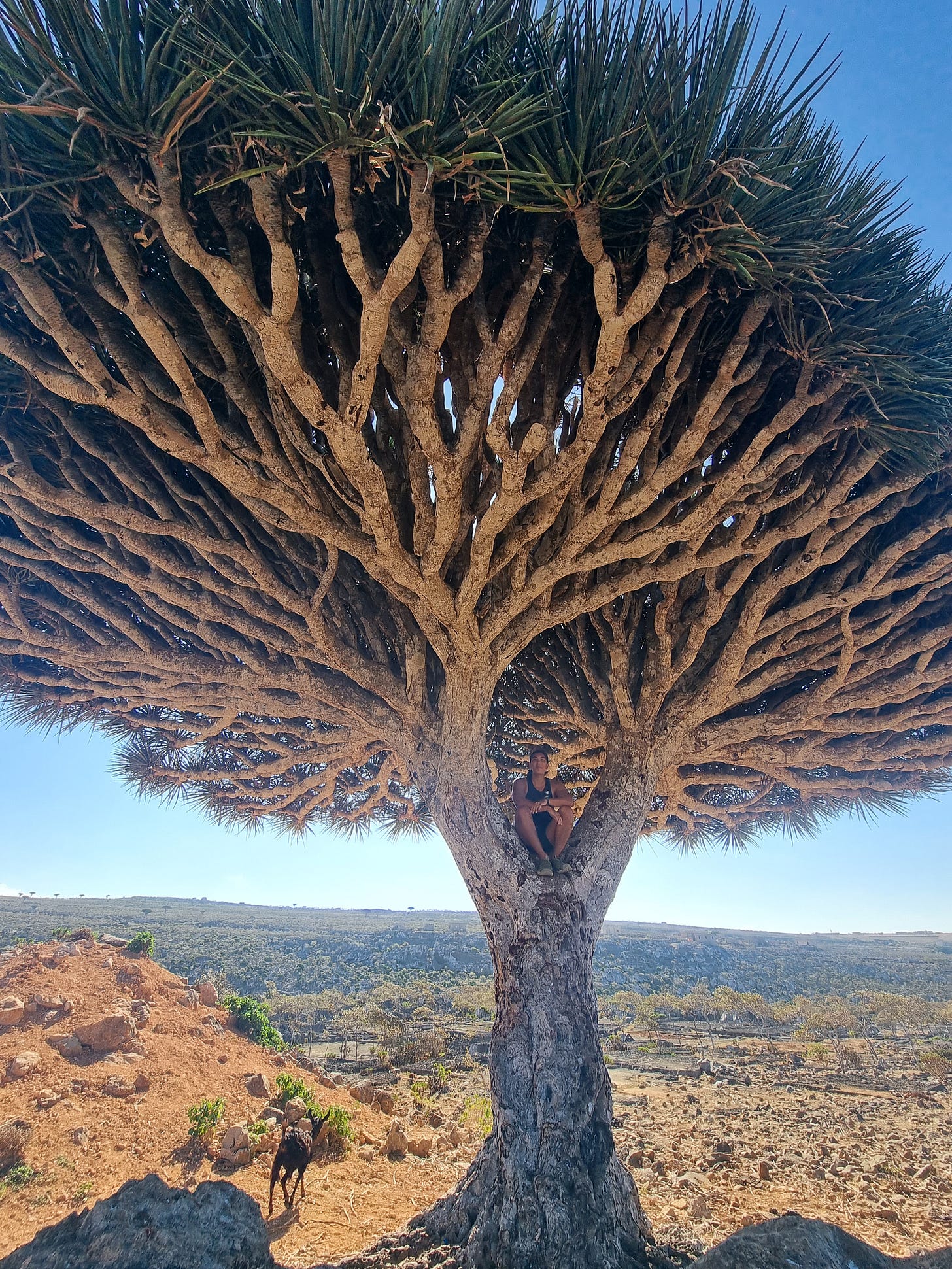
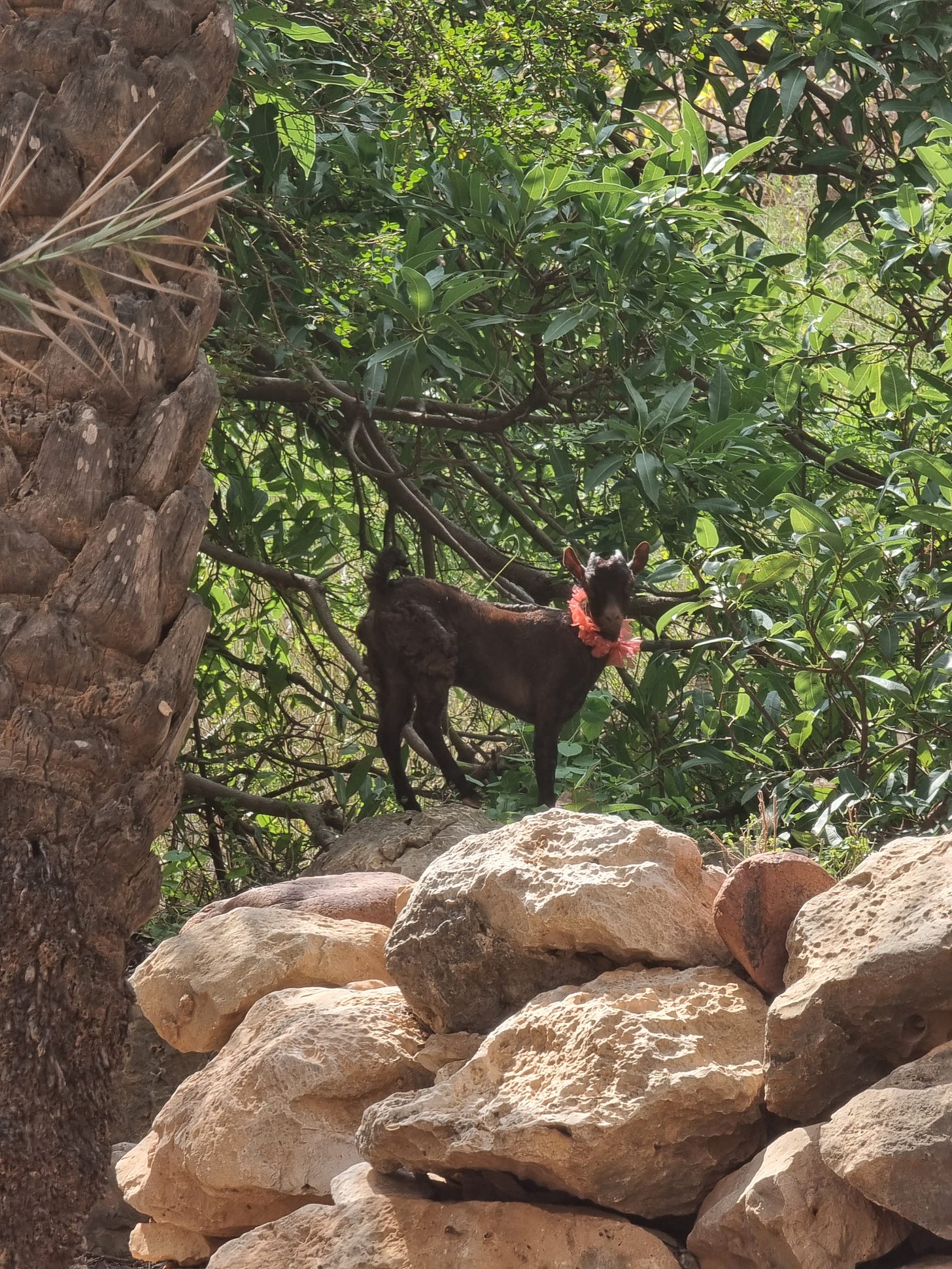
I was there in 2023 - unforgettable! But the island's quickly reaching its carrying capacity of visitors (or, at least the campsites are) - they badly need a development plan.